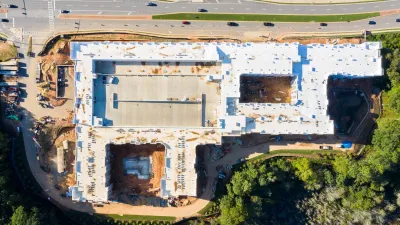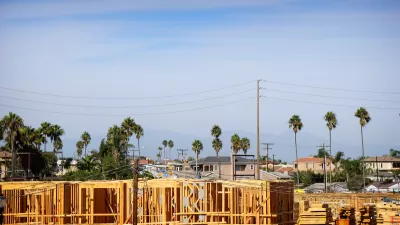A new approach to affordable housing attempts to overcome the traditional approaches of supply-side economics and government-funded investments and extractions.

Joe Cortright writes on the subject of a "third way" to build affordable housing—in addition to the traditional approaches of supply-side economics and public investment in affordable housing through subsidies and inclusionary zoning.
While acknowledging the importance of both methods of adding and preserving affordable housing, Cortright is amplifying news of a third way that doesn't conform to either of those approaches while acknowledging their shortcomings.
[Washington, D.C. developer Rob] Stewart and his firm are working with the Federal City Council in Washington DC on a proposal they call the Washington Housing Initiative (WHI), which aims to create more affordable housing units, more quickly, in neighborhoods that are on the cusp of change. The essential idea is to use a combination of private investment and public funds to acquire existing housing, and maintain its availability for low and moderate income households. Buying existing housing units is dramatically less expensive that building new units, and can be done much more quickly.
And more:
WHI aims to have a lower cost of capital and lower operating cost that traditional affordable housing approaches. A key economy comes from taking a “fund” approach rather than a “project” approach to structuring financing. In most affordable housing projects, funding is arranged on a project-by-project basis, with each project consisting of a different set of actors, and funding sources, and with the added complexity of construction financing and site-specific risk. The WHI would be structured as a pooled fund, with financing not tied to individual projects, but spread across many projects. Because the fund is buying existing buildings, construction lending isn’t needed and other risk factors (approval or construction delays) are minimized. A fund, especially one led by private management, could be quick and nimble, and minimize overhead costs of acquiring properties.
There's a white paper that shares detail insights into the development as a potential model for projects in other locations.
FULL STORY: A third-way for approaching affordable housing

Planetizen Federal Action Tracker
A weekly monitor of how Trump’s orders and actions are impacting planners and planning in America.

Maui's Vacation Rental Debate Turns Ugly
Verbal attacks, misinformation campaigns and fistfights plague a high-stakes debate to convert thousands of vacation rentals into long-term housing.

Restaurant Patios Were a Pandemic Win — Why Were They so Hard to Keep?
Social distancing requirements and changes in travel patterns prompted cities to pilot new uses for street and sidewalk space. Then it got complicated.

In California Battle of Housing vs. Environment, Housing Just Won
A new state law significantly limits the power of CEQA, an environmental review law that served as a powerful tool for blocking new development.

Boulder Eliminates Parking Minimums Citywide
Officials estimate the cost of building a single underground parking space at up to $100,000.

Orange County, Florida Adopts Largest US “Sprawl Repair” Code
The ‘Orange Code’ seeks to rectify decades of sprawl-inducing, car-oriented development.
Urban Design for Planners 1: Software Tools
This six-course series explores essential urban design concepts using open source software and equips planners with the tools they need to participate fully in the urban design process.
Planning for Universal Design
Learn the tools for implementing Universal Design in planning regulations.
Heyer Gruel & Associates PA
JM Goldson LLC
Custer County Colorado
City of Camden Redevelopment Agency
City of Astoria
Transportation Research & Education Center (TREC) at Portland State University
Jefferson Parish Government
Camden Redevelopment Agency
City of Claremont





























